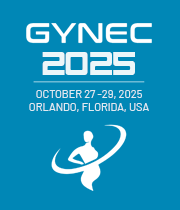Title : Leveraging natural language processing to advance women’s health: Early detection of possible polycystic ovarian syndrome in emergency radiology reports
Abstract:
Polycystic Ovary Syndrome (PCOS) is one of the most common endocrine disorders affecting women of reproductive age, with implications for fertility, metabolic health, and long-term disease risk. Diagnosis requires a combination of imaging and clinical findings such as irregular menstruation and hormone levels. However, in settings like the Emergency Department (ED), radiologists often describe ovarian morphology without explicitly suggesting PCOS or recommending follow-up. This diagnostic ambiguity contributes to patients, especially women, being lost to follow-up, risking delayed diagnosis and missed treatment opportunities. With national trends showing declining fertility and increasing pre-diabetes rates, there is a pressing need for scalable solutions to bridge this care gap.
Pelvic ultrasound reports from non-obstetric (OB) patients who presented through the ED were manually reviewed and classified as “No PCOS” or “Possible PCOS” based on imaging descriptors. A training dataset was created with 83 reports per category, and a separate validation set with 30 “No PCOS” and 15 “Possible PCOS” cases. We used Google Colaboratory (Colab), a cloud-based Jupyter Notebook platform, to train a logistic regression classifier, leveraging libraries such as Scikit-learn and TensorFlow. The model was trained using TF-IDF, which converts ultrasound report text into numerical features for classification.
The trained logistic regression model achieved a validation accuracy of 0.93. For the “No PCOS” class (n=30), precision was 1.00 and recall was 0.90, indicating strong performance with minimal false positives. For the “Possible PCOS” class (n=15), precision was 0.83 and recall was 1.00, suggesting the model successfully identified all true positive cases in this group but misclassified a few non-PCOS reports as possible PCOS. The weighted average F1-score was 0.93, demonstrating overall model reliability across both categories.
This study demonstrates that a logistic regression model trained on radiology reports can reliably identify possible PCOS cases. Such tools could support earlier clinical intervention by automatically identifying patients who may benefit from follow-up or confirmatory testing. This model addresses a critical gap in women’s health by enabling proactive care, even when explicit recommendations are missing, without increasing the workload for radiologists or ED clinicians.



